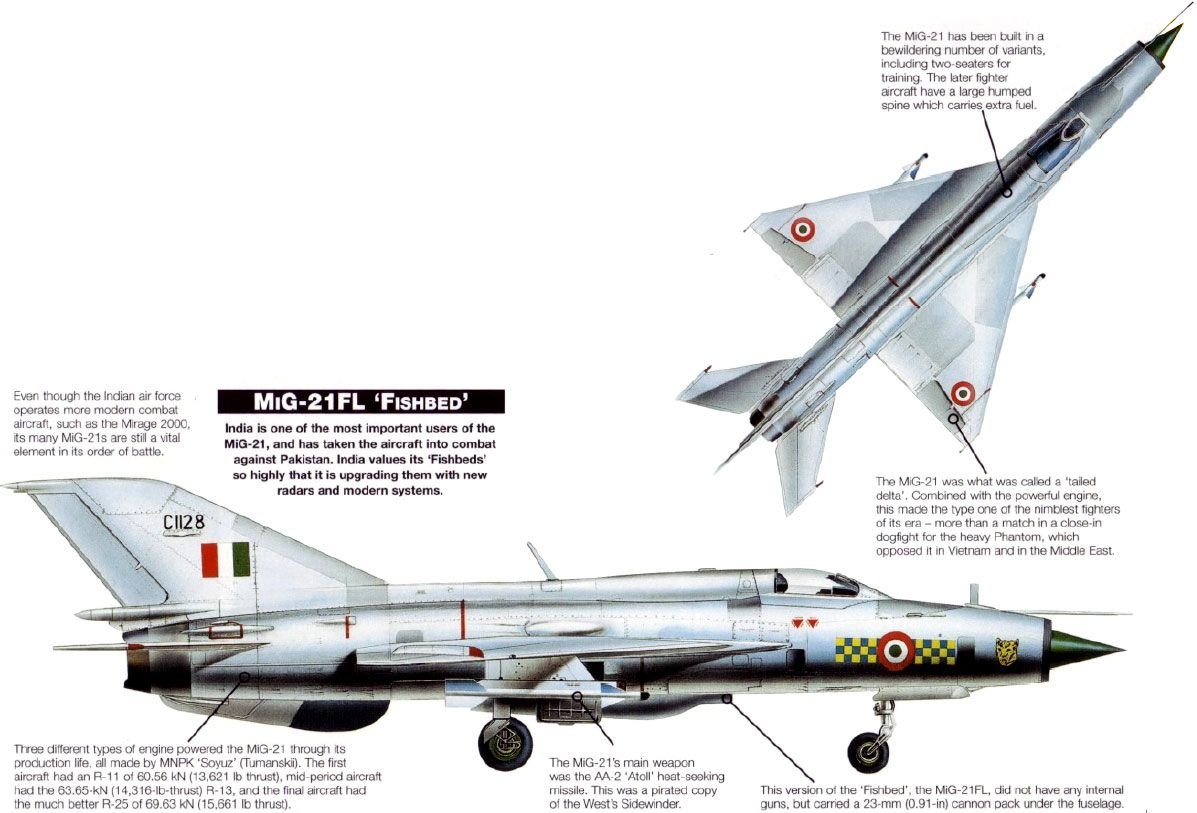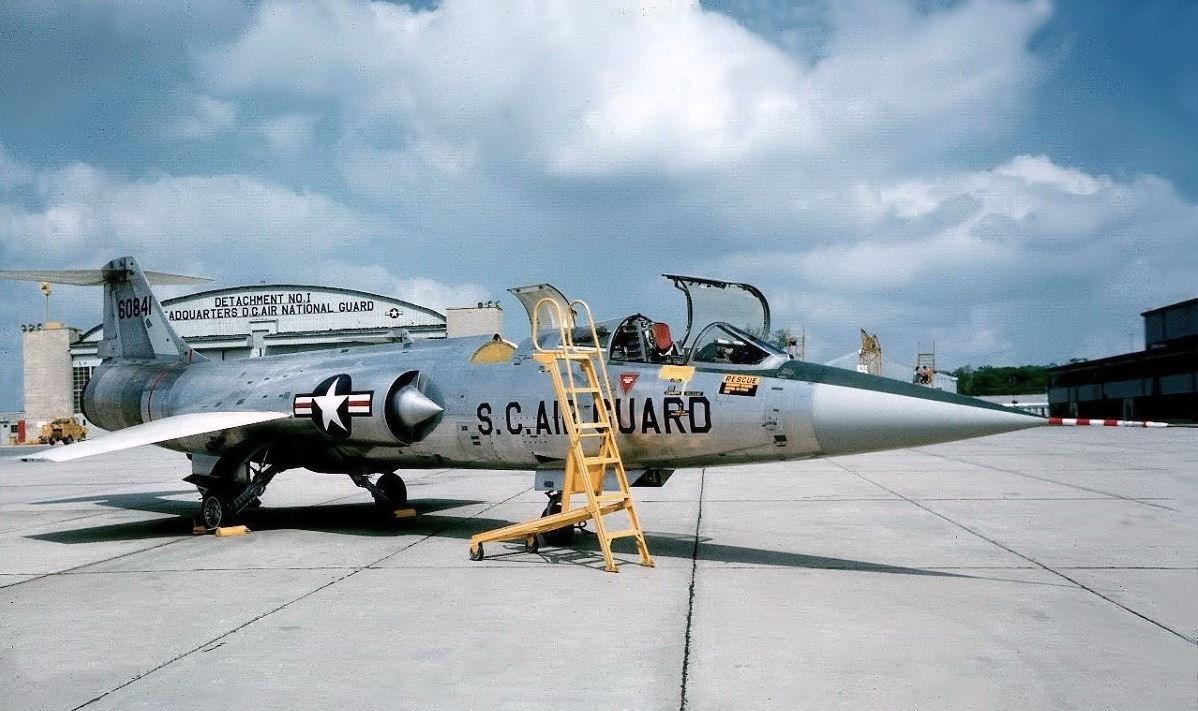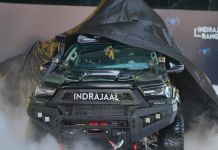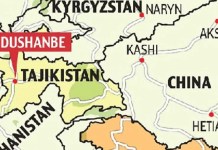The first supersonic air combat over the Indian subcontinent took place in 1971. MiG-21FLs of the Indian Air Force (IAF) battled F-104A Starfighters of the Pakistan Air Force (PAF) and the former catapulted India to victory by downing about three to four Starfighters over what is now Bangladesh.
DECODED – Did China Help Moscow Hack Ukraine & Share Critical Intelligence Before The Russian Invasion?
Transpiring at the height of the cold war, it was a showdown between the two superpowers – the Soviet and American supersonic fighters, far away in South Asia.
The battle between the two aircraft had been anticipated for a long time, as the F-104 and MiG-21 were similar in many aspects – both are supersonic interceptors that entered service in the late 1950s with limited secondary multirole capability.
The Indian Air Force (IAF) wanted to acquire supersonic jet fighters as early as 1962. The F-104 Starfighter and the English Electric Lightning were among the aircraft on the IAF’s shortlist.
However, the F-104A Starfighter was already in service with the Pakistan Air Force (PAF) as a result of Islamabad’s association with the US through the SEATO and CENTO pacts.

India’s debacle against China in the 1962 war warranted a more agile and combat-ready military. The IAF finally chose the Russian-made Mikoyan-Gurevich MiG-21 [dubbed Fishbed by NATO] as its rival force was already flying the F-104A Starfighter.
In January 1963, India received the first shipment of MiG-21s (of the F-13 type) to supplement its aging force of British-built fighters. The 28 Squadron “First Supersonics” was equipped with six planes.
Seven pilots from that squadron were trained in the Soviet Union.
There were a few training mishaps that resulted in the loss of three MiG-21F-13 fighter jets. In March 1965, these were replaced by four further MiG-21F-13s and two MiG-21PFs, increasing the total number of MiGs operated by 28 Squadron to nine.
When the Indo-Pakistani War broke out in 1965, the 28 Squadron was ready to go, and it took part in escort and combat air patrol operations. However, it was pulled from the front after two aircraft were lost during an airbase raid. Some F-104As also fought in the 1965 war, but the two fighters were not in direct combat at the time.
The MiGs Reigned Supreme
When the Indo-Pakistani conflict broke out in 1971, the IAF had more MiG-21s as compared to the 1965 war, this time modified to the MiG-21FL type.
The Mikoyan-Gurevich MiG-21 Forsazh Lokator was a supersonic beast that flew at Mach 2.25, faster than twice the speed of sound. A massive Tumansky R-11 F-300 engine propelled it. It was equipped with R1L radar in its nose cone, which could detect opposing fighters at a distance of 20 kilometers.

Two Vympel K-13 (AA-2 Atoll-A) infrared homing missiles were carried by the MiG-21 FL. It had to carry a drop tank beneath the fuselage due to its limited range, which could be swapped out for a GSh-23 twin-barreled gun pod.
The IAF registered its first win with MiG-21s during the air battle over Bangladesh. A MiG-21FL of the 28th Squadron shot down a PAF F-86 Sabre with two R-3S air-to-air missiles during an airstrike on an airport.
During the battle, the MiGs were also employed to attack targets, including a cabinet meeting held by the East Pakistani administration.
#YearsBack on this day #IAF : On 09 Oct 1970 first MiG-21 FL produced by HAL, Nasik was delivered to the Indian Air Force. The MiG-21 FL aircraft represented a new generation of fighters of the IAF in the Mach 2 class. pic.twitter.com/on1KpxI8Ae
— Indian Air Force (@IAF_MCC) October 9, 2018
The MiGs met stiffer opposition in the west. The PAF used Shenyang J-6s (a MiG-19 version), F-104As, and Mirage IIIEs in the west. Because of its superior radar system, the Mirage IIIE was thought to be superior to whatever the IAF possessed.
Pakistan also deployed a number of American ground radar units to help direct their fighters in the right direction.
The IAF had three MiG-21 squadrons in the east by December 1971: No.4 Oorials, No.28 First Supersonics, and No.30 Charging Rhinos. Five squadrons patrolled the western border: the No. 1 Tigers, No. 8 Eight Pursoots, No. 29 Scorpions, No. 45 Winged Swords, and No. 47 Black Archers. They were all well-equipped to protect the skies of India.
On December 12, 1971, two IAF MiG-21FLs were scrambled to intercept two F-104As strafing airbases, marking the first successful engagement of F-104s by MiG-21s. When the lead PAF fighter’s wingman saw the interceptors, he swiftly wheeled off and severed contact.
The MiG-21s then drew in and launched an R-3S, but the missile was deflected by flares deployed by the F-104A. The MiG-21 then closed to 300 meters and fired its weapon, resulting in a kill.

Later in the day, two more F-104s were shot down while escorting PAF bombers. Despite their impressive performance versus F-104s, IAF MiGs also incurred losses. In action, six MiG-21FLs were lost. One was caused by friendly fire from another MiG-21, four by ground fire, and one was caused by a PAF F-86F Sabre.
Both the IAF and the PAF received the MiG-21 and F-104 within a few years of each other, thus pilots from both air forces would have had some familiarity with the aircraft they were flying. While the F-104 was faster, the MiG-21 had a faster-sustained turn rate and was thought to have superior flight qualities.
After the conflict in 1971, the MiG-21 remained in service with the IAF, albeit it did not see much action in the air. A Pakistani Navy Anti-Submarine Warfare aircraft was shot down by an IAF MiG-21B in 1999, causing a small crisis. They were also deployed for ground support missions in Sri Lanka against the LTTE.
The MiGs played a clear role in bending the war in India’s favor and taking it to a decisive end. Its outstanding performance and the Indian Air Forces’ high morale ultimately led to the surrender of the Pakistani military and the creation of Bangladesh.
- Contact the author at sakshi.tiwari9555@gmail.com
- Follow EurAsian Times on Google News




